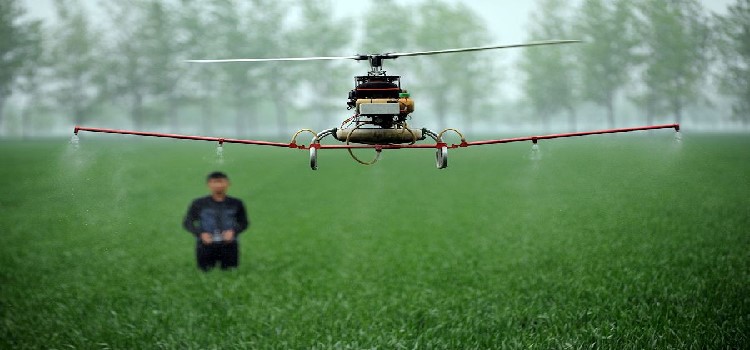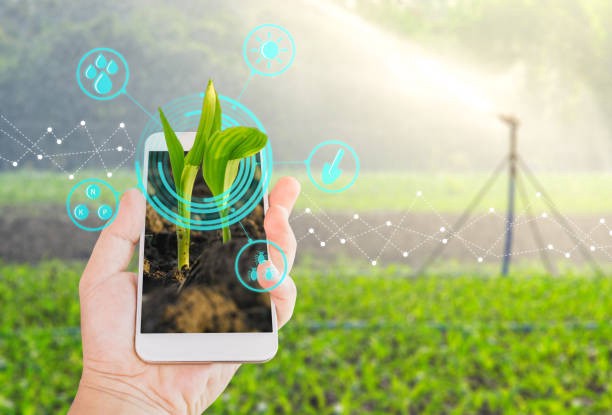
Africa Agriculture Robots Market by Type (Driverless Tractors, Unmanned Aerial Vehicles (UAVs), Milking Robots, Automated Harvest Robots, and Others), Offering (Hardware, Software, and Services), Farming Type (Indoor Farming and Outdoor Farming), Application (Dairy Management, Irrigation Management, Harvest Management, Soil Management, Inventory Management, and Others), and End User (Field Crops, Fruits & Vegetables, Livestock, and Others) – Opportunity Analysis and Industry Forecast 2023–2030
Industry: Agriculture | Publish Date: 24-Jul-2023 | No of Pages: 89 | No. of Tables: 73 | No. of Figures: 31 | Format: PDF | Report Code : N/A
Market Definition
Africa Agriculture Robots Market was valued at USD 67.43 million in 2022, and is predicted to reach USD 336.83 million by 2030, with a CAGR of 21% from 2023 to 2030. Agricultural robots, also known as Agribots, an automated or semi-automated machines designed to perform various tasks in the field of agriculture, such as planting, harvesting, monitoring, and spraying crops. They aim to increase efficiency, productivity, and accuracy in agriculture while reducing the need for manual labor and improving working conditions for farmers. Agribots can range from small unmanned aerial vehicles to large tractors, and combine harvesters, utilizing advanced technologies such as sensors, computer vision, and artificial intelligence.
These robots have various applications, for instance, automated planting machines can plant seeds and seedlings accurately and efficiently, reducing the time and manual labor required for this task. Agribots can monitor crops for early detection of diseases and pests, allowing for prompt and efficient treatment. Also, these robots can help farmers to practice precision agriculture, making more informed decisions about planting, fertilization, and pest control through accurate data collection and analysis.
Importance of Agricultural Robots in Africa for Increasing Crop Yields and Enhancing Agricultural Productivity
Agriculture is a vital industry in Africa, with more than 60% of sub-Saharan Africa's population working in the sector. Most of the agricultural production in Africa is for self-sufficiency and local consumption, although some countries have developed a thriving commercial farming industry. The agricultural industry is the largest source of employment in the continent, and plays a crucial role in economic development, reducing poverty, and ensuring food security. However, factors such as drought, soil degradation, and limited access to agricultural resources hinder agricultural production and efficiency in many parts of Africa. Therefore, agricultural robots and mechatronics are increasingly being employed in the region to increase crop yields and improve the quality of agricultural products. Thus, creating a significant growth of the market.
Labor Shortage and Cost as Drivers for Agriculture Robots Adoption in Africa
Africa like many other regions, faces a labor shortage in the agriculture sector. Rural-to-urban migration and a lack of interest among younger generations in pursuing farming as a career contribute to this shortage. Therefore, agriculture robots offer a solution by automating labor-intensive tasks, reducing the dependency on manual labor and mitigating labor scarcity challenges. Additionally, the potential cost savings from replacing manual labor with robots also makes them an attractive option for farmers in Africa. Thus, it is expected to boost the growth of the market.
Limited Technical Expertise as a Restraint for Agriculture Robots in the Africa
One of the primary barriers to the broad deployment of agricultural robots in Africa is the region's lack of technical skills. Agriculture robots require specialized knowledge and abilities in robotics, automation, and associated technologies to operate and maintain. However, skilled professionals with experience in these sectors are in limited supply. Thus, it is expected to restrain the growth of the agriculture robots market.
Technological Advancements in Agricultural Sector
With the introduction of artificial intelligence (AI), machine learning, and robotics, the African agriculture industry is undergoing a revolution. These technologies are transforming agricultural robot capabilities, allowing them to do a wide range of tasks such as planting cover crops, managing diverse cropping systems, and providing real-time data on soil health indicators. As a result, the African agricultural robotics sector is expected to create ample opportunities for the market in coming years.
Competitive Landscape
The Agriculture Robots industry includes several market players such as Dragonfly Aerospace, SKT Aeroshutter, SkyX, Small Robot Company, Blue River Technology, ecoRobotix, Rowbot, Harvest CROO Robotics, Abundant Robotics, and Rabbit Tractors. These market players are adopting various strategies such as product launches in the market of Africa.
For instance, in January 2023, Dragonfly Aerospace launched the world’s first agriculture-focused satellite AgriSAT-1 /ZA 008, on a Space X Falcon 9 rocket for agriculture and forestry industry with high-quality data to support efficient and sustainable practices. This development will help in harvest monitoring, application mapping, seasonal planning and assessments that analyse information such as soil moisture, yield prediction and biomass levels. This data will support growers in reducing carbon dioxide emissions and help them to develop sustainable agricultural methods.
KEY BENEFITS
-
The Africa agriculture robots market report provides a quantitative analysis of the current market and estimations through 2023-2030 that assists in identifying the prevailing market opportunities to capitalize on.
-
The study comprises a deep dive analysis of the market trend including the current and future trends for depicting the prevalent investment pockets in the market.
-
The information related to key drivers, restraints, and opportunities and their impact on the market is provided in the report.
-
The competitive analysis of the market players along with their market share in the Africa agriculture robots market.
-
The SWOT analysis and Porter’s Five Forces model are elaborated in the study.
-
Value chain analysis in the market study provides a clear picture of the stakeholders’ roles.
AFRICA AGRICULTURE ROBOTS MARKET KEY SEGMENTS
By Component
-
Driverless Tractors
-
Unmanned Aerial Vehicles (UAVs)
-
Milking Robots
-
Automated Harvest Robots
-
Others
By Offering
-
Hardware
-
Software
-
Services
By Farming Type
-
Indoor Farming
-
Outdoor Farming
By Application
-
Dairy Management
-
Irrigation Management
-
Harvest Management
-
Soil Management
-
Inventory Management
-
Others
By End User
-
Field Crops
-
Fruits & Vegetables
-
Livestock
-
Others
KEY PLAYERS
-
GEA Group
-
CNH Industrial
-
Delaval
-
Deere & Company
-
AGCO Corporation
-
Trimble Inc.
-
Naio Technologies
-
Yanmar Holdings Co. Ltd.
-
SZ DJI Technology Co. Ltd.
-
Boumatic
-
Harvest Automation Inc
-
Autonomous Solution Inc
-
Clearpath Robotics
-
Ageagle Aerial System
-
Kubota Corporation




 Speak to Our Analyst
Speak to Our Analyst

































